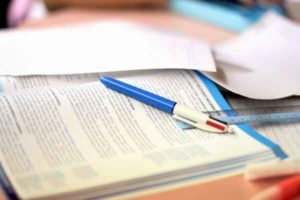
While most appeals to invest resources in the nation’s poor make a moral argument about doing what is right, the Washington Center’s argument is purely economic—meaning it should be something around which leaders from different political orientations could rally.
In the past, the moral argument has not worked. After all this is a country where one recent study by researchers from Stanford found that the more whites are told the criminal justice system is racist and unfair to Black people, the more they like it. And a country where many whites oppose reforms like Obamacare, which ostensibly benefits anyone without healthcare, because they believe they are handouts to Black people.
The Center notes that in the years between World War II and the 1970’s, the income of Americans increased across the board—i.e., the incomes of the poor and middle-class increased at the same rate as the wealthy. But since the 1970’s, the income of the wealthy flew off the charts while the poor and middle-class either fell or stagnated.
“A restoration, then, of the economic growth pattern that characterized the first three post-war decades would result in both greater and more widely shared economic growth—equitable growth,” the authors of the report wrote. “In order to address this key challenge confronting the United States, this study empirically quantifies the economic and tax benefits of raising the educational achievement of children from less advantaged socioeconomic backgrounds.”
But the report, with the unwieldy title “The Economic and Fiscal Consequences of Improving U.S. Educational Outcomes,” relies on a modicum of common sense and an appeal to the common good to make its case. But these are things which have been in short supply in recent years in Washington, D.C., a place where Republican lawmakers actually said out loud that they would dedicate themselves to making sure President Obama failed, which obviously meant the nation would be failing as well.
To assess where the U.S. falls on international comparisons, the report uses the 2012 scores on the Programme for International Student Assessment (PISA) math and science achievement tests taken by students across the world. Of the 34 economically advanced nations who are members of the Organisation for Economic Co-operation and Development (OECD), the U.S. ranked 24th in test performance. As other analyses have shown, this relatively low ranking is primarily because the U.S. does such a bad job of educating its poor students compared to the other nations. The performance of wealthy students in the U.S. is among the best in the world, but the poorest students in the highest ranking nations do much better than the poorest students in the U.S.
In its report, the Washington Center considers three hypothetical situations in which the U.S. decided to spend enough resources on the poor to substantially lift student performance.
In the first scenario, if the performance of American students were raised to the average of the 34 economically advanced nations—so the U.S. is in the middle of the pack with France instead of lagging behind—then by the year 2050 the size of the U.S. economy would be 1.7 percent, or $678 billion, larger. This amounts to an average of more than $72 billion a year increase. By 2075, when the effects of policy reforms required to reach this first scenario are fully phased in, the U.S. economy would be 5.8 percent, or $4.1 trillion, larger than it would otherwise be, and the cumulative increase in GDP over the 60-year period from 2015 to 2075 would amount to $14 trillion in present value, an average of $234 billion per year.
If America lifted the performance of its children to match Canadian kids, then economic growth would be significantly larger. In 2050 the U.S. economy would be 6.7 percent, or $2.7 trillion, larger. The cumulative increase in GDP between 2015 and 2050 would amount to nearly $10 trillion in present value, $285 billion on average per year. In 2075, the real U.S. GDP would be 24.5 percent, or $17.3 trillion, larger, and the cumulative increase between 2015 and 2075 would equate to over $57 trillion in present value GPD, an average of $956 billion per year.
In the most ambitious scenario, if the achievement gap between rich and poor in America were closed to that children from all backgrounds performed well on the test, putting the U.S. behind only South Korea and Japan, then the U.S. economy would be 10 percent, or $4 trillion, larger in 2050. The cumulative increase in GDP by 2050 would amount to $14.7 trillion in present value, or $420 billion per year. In 2075, once policy reforms have fully taken effect, the real U.S. GDP would be 37.7 percent, or $26.7 trillion, larger, and the cumulative increase in present value GDP over 60 years would sum to $86.5 trillion, an average of over $1.4 trillion per year.
For those who have doubts that the performance of poor students could be lifted to such a degree, the researchers provide evidence by illustrating that the poorest 75 percent of children in the state of Massachusetts have an average PISA math and science test score that is higher than the OECD average score (995)—meaning that if the rest of the nation spent as much on educating poor students as Massachusetts does, the goals in the report could be reached,
Even at the county level, places like Montgomery County in Maryland have significantly raised the performance of poor students by introducing all-day kindergarten programs, reducing class size, investing in teacher development, lessening housing-based segregation in its schools, and adding a host of other reform. The percentage of 5th graders reading at or above the proficient level on the Maryland State Assessment rose for all racial and ethnic groups in Montgomery County between 2003 and 2009. In addition, gaps between the disproportionately lower-income Black and Hispanic students and the disproportionately higher-income white and Asian students narrowed.


